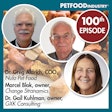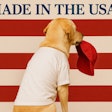
After years of free spending on pet food, U.S. pet owners are starting to tighten their budgets — but they’re not willing to sacrifice their pets’ health to do it. According to Shannon Landry, pet brand manager at Packaged Facts, this shift marks a pivotal moment for pet food processors: one where perceived value is being redefined through the lens of health and wellness.
“Over 80% of pet owners view pet food as the most important health and wellness product they purchase for their pets,” said Landry. “That means brands should be promoting the health and wellness benefits of the foods they produce, market and sell.”
During her Petfood Forum presentation, Landry dove into new consumer research from Packaged Facts showing how economic pressure is reshaping pet food purchasing behavior. While pet owners are more cost-conscious than they’ve been in recent years, Landry emphasized that most are not simply buying the cheapest options. Instead, they’re seeking out pet foods that offer better value, especially through health-related benefits.
“Quality is still a top concern, despite belt-tightening,” she said. “Pet owners are prioritizing pet foods that support health in meaningful ways. That’s how they’re defining value now.”
Formulations with a "health halo"
As consumer priorities shift, so do preferences for formulations and ingredients. Landry noted that less-processed options like fresh and gently cooked foods are gaining ground thanks to what she calls a “health halo.”
“These foods are seen as healthier not just because of the ingredient list, but because they resemble what pet owners feed themselves,” she explained. “That familiarity adds to the trust and appeal.”
Freeze- and air-dried foods also benefit from this perception, while more niche categories like insect- and plant-based proteins or animal-welfare-certified products are struggling to gain wider acceptance. “These areas show potential,” Landry said. “But there’s still a significant education gap. Price is also a factor, especially in this economic climate.”
Balancing budget and benefits
With the pet food market increasingly divided between premium and value products, brands are finding creative ways to appeal to both ends of the spectrum. Landry highlighted that superpremium brands are tackling cost concerns head-on by reframing their products’ price points.
“Higher-end brands are doing the math for pet owners, showing them how affordable their products really are on a cost-per-day basis,” she said. “At the same time, value brands are emphasizing messages like ‘overall health’ and ‘keeping pets happy and healthy’ to maintain credibility without positioning strictly on price.”
The wellness integration opportunity
Pet owners are also integrating food into broader pet wellness strategies — from supporting specific health conditions to enhancing the pet-owner bond. According to Landry, opportunities abound for formulations targeting issues like skin and coat health, joint support, and age-specific needs. Products that align with human wellness trends, such as “healthy living” and mental engagement, are also gaining traction.
“There’s also growing interest in products that feel ‘fresh’ without being perishable,” Landry said. “Think wet toppers, shelf-stable gently cooked foods, or private-label products that focus on quality rather than price.”
As pet owners continue to navigate economic uncertainty, Landry sees clear signals that health and wellness will remain at the heart of their purchasing decisions.
“They may be spending more carefully, but they’re still putting their pets’ health first,” she said. “The challenge — and the opportunity — for brands is to meet them at that intersection of wellness and value.”



















